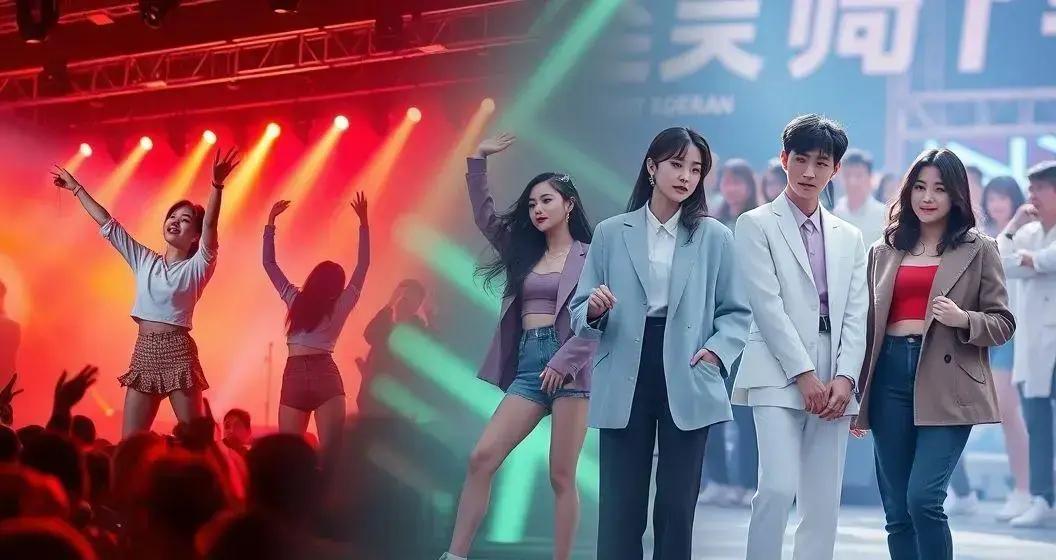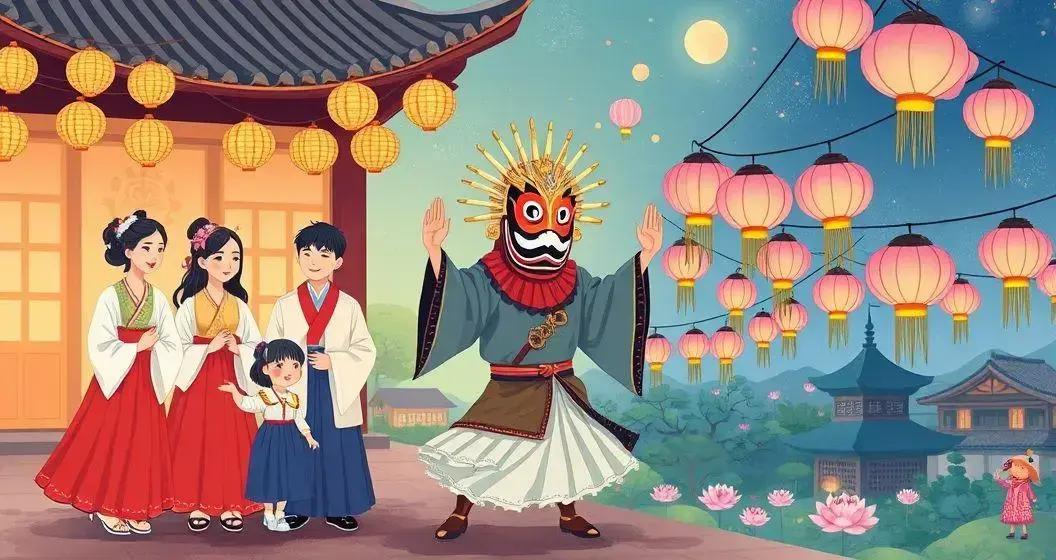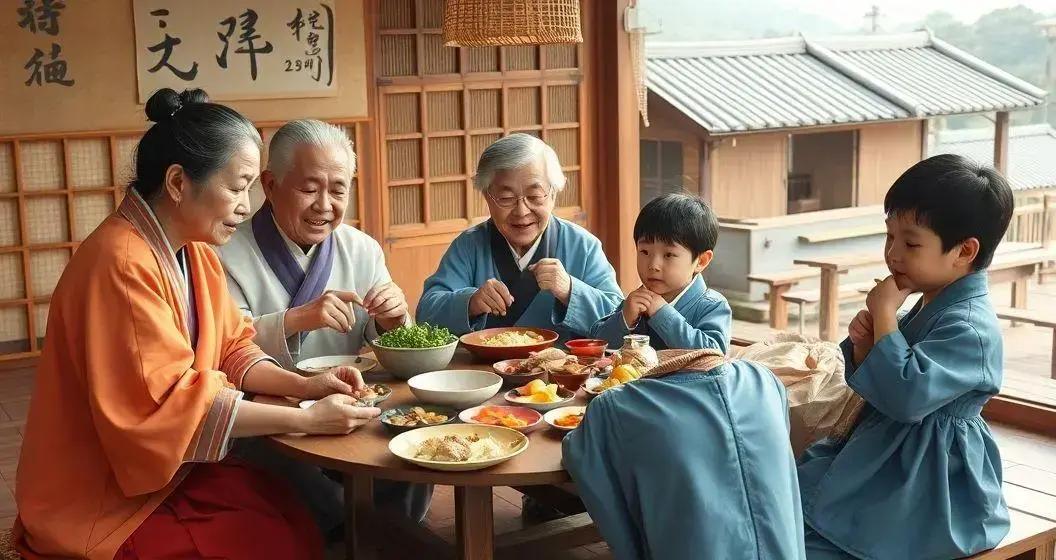Korean Culture: Explore the Rich Traditions and Modern Influences
Advertisements
**Korean culture** is a captivating blend of tradition and modernity, capturing the imagination of many. From ancient rituals to **K-pop sensations**, Korea offers a unique cultural tapestry that is worth exploring. This post delves into the historical roots, modern influences, and vibrant artistic expressions that define this fascinating culture. Whether it’s the delicious food, lively festivals, or family-centered values, there’s something in **Korean culture** for everyone to discover.
The Historical Roots of Korean Traditions
The historical roots of Korean traditions are fascinating and diverse, dating back thousands of years. These origins provide insight into the unique customs and values that have shaped Korea today. Korea’s early history was heavily influenced by its interactions with neighboring China and Japan, which left a significant mark on its language, religion, and society.
One of the most notable aspects of Korean history is the Three Kingdoms period (57 BC to 668 AD). During this time, the kingdoms of Goguryeo, Baekje, and Silla vied for dominance, and each contributed to the rich tapestry of Korean culture. For example, Silla is renowned for its advancements in art and literature, which are evident in the exquisite sculptures and poetry from that era.
Korean Confucianism and Buddhism
Confucianism became particularly influential during the Joseon Dynasty (1392–1897), establishing societal values focused on familial piety, respect for elders, and education. Meanwhile, Buddhism, introduced during the previous Three Kingdoms period, also played a crucial role, contributing to a wealth of temple complexes and art forms that represented philosophical teachings and aesthetics.
The tradition of Hanbok, Korea’s traditional clothing, developed during these times, exemplifying the elegance and grace valued in Korean society. The styles varied by region and era but retained a signature style characterized by vibrant colors and simple lines. This aspect of Korean culture remains alive today, worn during celebrations and festivals.
The traditional Korean fortress architecture, with its distinctive curved roofs and wooden structures, also springs from earlier periods, symbolizing both strength and harmony with nature.
Modern Influences on Korean Pop Culture

Korean pop culture has taken the world by storm with its vibrant music, drama, and styles. This global phenomenon, known as the Korean Wave or Hallyu, began in the late 1990s and has only grown stronger with time. The spread of K-pop, characterized by catchy tunes, intricate choreography, and visually stunning music videos, is a significant driver of this cultural export.
The Rise of K-pop
Bands like BTS, BLACKPINK, and EXO have become household names worldwide, bringing Korean music to the forefront of the international stage. These groups often blend **modern music genres** such as hip-hop, electronic dance music, and R&B, making their appeal universal.
Korean dramas, or K-dramas, are another major component of modern Korean pop culture. Series like ‘Crash Landing on You’ and ‘Itaewon Class’ have captivated international audiences with their engaging storylines and high production values. Streaming platforms have made these shows more accessible, further boosting their popularity.
Korean cinema, too, has made substantial impacts, winning prestigious awards like the Oscar for “Parasite”, showcasing the depth and creativity of Korean storytelling.
The influence of Korean fashion and beauty trends also cannot be overstated. The concept of Korean ‘aegyo’ or cute, youthful aesthetics, has become a trendsetter internationally, influencing styles and cosmetics.
Additionally, social media platforms have played a critical role in the rapid dissemination of these cultural elements. Korean celebrities actively engage with their fans, using platforms like Instagram and TikTok to share behind-the-scenes glimpses and launch trending challenges, further enhancing fan interaction and global reach.
Korean Cuisine: A Gastronomic Journey
Korean cuisine offers a gastronomic journey that excites and delights the senses with its unique flavors and textures. At the heart of Korean food is the emphasis on spice, balance, and harmony, creating meals that are as much an experience as they are a taste sensation.
Kimchi: The Iconic Side Dish
A staple of Korean dining, kimchi is a fermented vegetable dish, usually made from napa cabbage and radishes. It is seasoned with chili pepper, garlic, ginger, and other spices. Rich in probiotics, kimchi is both healthful and delicious, adding a distinctive kick to any meal.
Beyond kimchi, Korean barbecue has gained international fame. Cooking marinated meats such as beef, pork, or chicken over charcoal or gas grills at the table is not just a meal but a communal experience.
Traditional Korean Dishes
Popular traditional dishes include bibimbap and bulgogi. Bibimbap is a mixed rice dish served with an assortment of sautéed vegetables, sliced meat, and topped with a fried egg. Each spoonful offers a different taste combination.
Bulgogi, often described as Korean barbecue beef, marinates in a blend of soy sauce, sugar, sesame oil, garlic, and other ingredients, delivering a tender, flavorful dish. It’s typically grilled or stir-fried with vegetables.
Soups and stews form an essential part of Korean meals, with kimchi jjigae and tteokguk being popular choices. Kimchi jjigae is a spicy and savory stew made with kimchi, tofu, and sometimes pork or seafood, while tteokguk, a traditional soup made with sliced rice cakes, is enjoyed especially during the Korean New Year.
Drinks like Korean rice wine, known as makgeolli, and soju also complement traditional meals, offering a refreshing taste that many enjoy with food.
Festivals and Celebrations in Korean Culture

Festivals and celebrations in Korean culture are a colorful and integral part of social life, blending tradition with community joy. These events offer a glimpse into the country’s rich history and its people’s vibrancy.
Seollal: The Lunar New Year
Seollal, or the Korean Lunar New Year, is one of the country’s most significant holidays, marking the beginning of the lunar calendar. Families gather to pay respect to ancestors through rituals called charye. Traditional games, wearing hanbok, and sharing special meals like tteokguk—a rice cake soup—are customary.
Another major holiday is the Chuseok, Korea’s harvest festival, similar to Thanksgiving. This three-day celebration involves honoring ancestors, visiting hometowns, and partaking in a meal featuring songpyeon, rice cakes filled with sesame seeds, red beans, and chestnuts.
Unique Cultural Festivities
The Boryeong Mud Festival, a modern celebration held every summer, draws crowds to engage in mud wrestling, mud sliding, and other muddy activities along the Daecheon Beach. Initially started to promote beauty products, it has become a fun-filled experience for all ages.
In contrast, the Andong Mask Dance Festival showcases Korea’s traditional masked dances, known as talchum. These dances, often satirical, were historically performed by commoners to express social issues and are now an essential aspect of preserving Korean heritage.
The lively Lotus Lantern Festival celebrates Buddha’s birthday, with streets adorned by lantern parades and cultural performances, creating a serene yet festive atmosphere.
Art and Architecture in Korea
Art and architecture in Korea reflect the country’s rich history and its innovative spirit. These creative expressions range from ancient artifacts to modern skyscrapers, demonstrating Korea’s diverse cultural heritage. Traditional Korean art often features intricate designs and vibrant colors, prominently seen in **Joseon Dynasty paintings** and ceramics.
Traditional Korean Architecture
Traditional architecture is characterized by its harmony with nature. Hanok, the traditional Korean house, features curved roofs and wooden beams that not only provide aesthetic beauty but also serve functional purposes, such as allowing sunlight in and ventilating homes. The layout and design of a hanok aim to integrate human living spaces with their natural surroundings.
Buddhist temples are another key aspect, found throughout the countryside and in urban areas. The structures often boast ornate carvings and colorful paintings, capturing spiritual and artistic essence. The temple’s stupas and pagodas provide a glimpse into the historical influence of Buddhism.
Modern Korean Art and Architecture
Beyond tradition, modern Korean art is flourishing, with artists like Nam June Paik, known as the father of video art, pushing boundaries in contemporary media. Galleries like the Seoul Museum of Art and Leeum, Samsung Museum of Art, play pivotal roles in showcasing both traditional and modern works.
In terms of architecture, South Korea is home to some of Asia’s most innovative structures. The iconic Namsan Seoul Tower offers panoramic city views and represents the blend of nature and innovation. Meanwhile, the Dongdaemun Design Plaza, designed by Zaha Hadid, exemplifies futuristic aesthetics with its flowing curves and interactive spaces.
This blend of the old and the new creates a landscape where cultural heritage and modern ingenuity coexist, offering a fascinating journey through Korea’s visual and structural artistry.
The Role of Family and Community in Korean Society

The role of family and community in Korean society is fundamental, deeply rooted in Confucian principles emphasizing respect, loyalty, and harmony. The family is considered the cornerstone of social life, where values and traditions are passed from one generation to the next.
Importance of Family Structure
The traditional Korean family often centers around the concept of filial piety, where children are expected to respect and care for their parents and elders. This mutual obligation is a cornerstone of many families, showcasing the importance of loyalty and respect.
Intergenerational living is common, with grandparents, parents, and children frequently residing under one roof. This arrangement ensures strong family ties and collective responsibility, providing stability and support for younger generations.
Community Engagement
Communities also play a crucial role in fostering identity and belonging. Many neighborhoods still observe traditions like ‘pungmul,’ a type of community-based folk performance that brings residents together through music, dance, and celebration.
Korea’s sense of community is also evident in its focus on education, where parents and community leaders often collaborate to ensure academic success for children. Hagwons, or private academies, are a common community resource, highlighting the communal commitment to scholarship and achievement.
The vitality of Korea’s community can also be seen in organizations and clubs that support culture, sports, and wellness. These groups provide spaces for socializing, learning, and personal development, reinforcing communal bonds.
The Rich Tapestry of Korean Culture
Exploring the vibrant landscape of Korean culture reveals a deep connection to tradition and a dynamic embrace of modernity. From the historical roots that shape Korean traditions to the global influence of its pop culture, Korea’s cultural journey is richly diverse.
The culinary experiences, marked by dishes like kimchi and bibimbap, offer a taste of Korea’s gastronomic artistry. Festivals and celebrations bring life to its customs, highlighting the joy and community spirit that define its people.
Art and architecture showcase a blend of old and new, where serene hanok houses stand alongside futuristic urban designs. At the heart of Korean society, family and community foster mutual support and cultural continuity, maintaining the essence of its values.
As the world continues to engage with Korea’s cultural offerings, understanding this balance of tradition and innovation becomes a testament to its enduring appeal.
